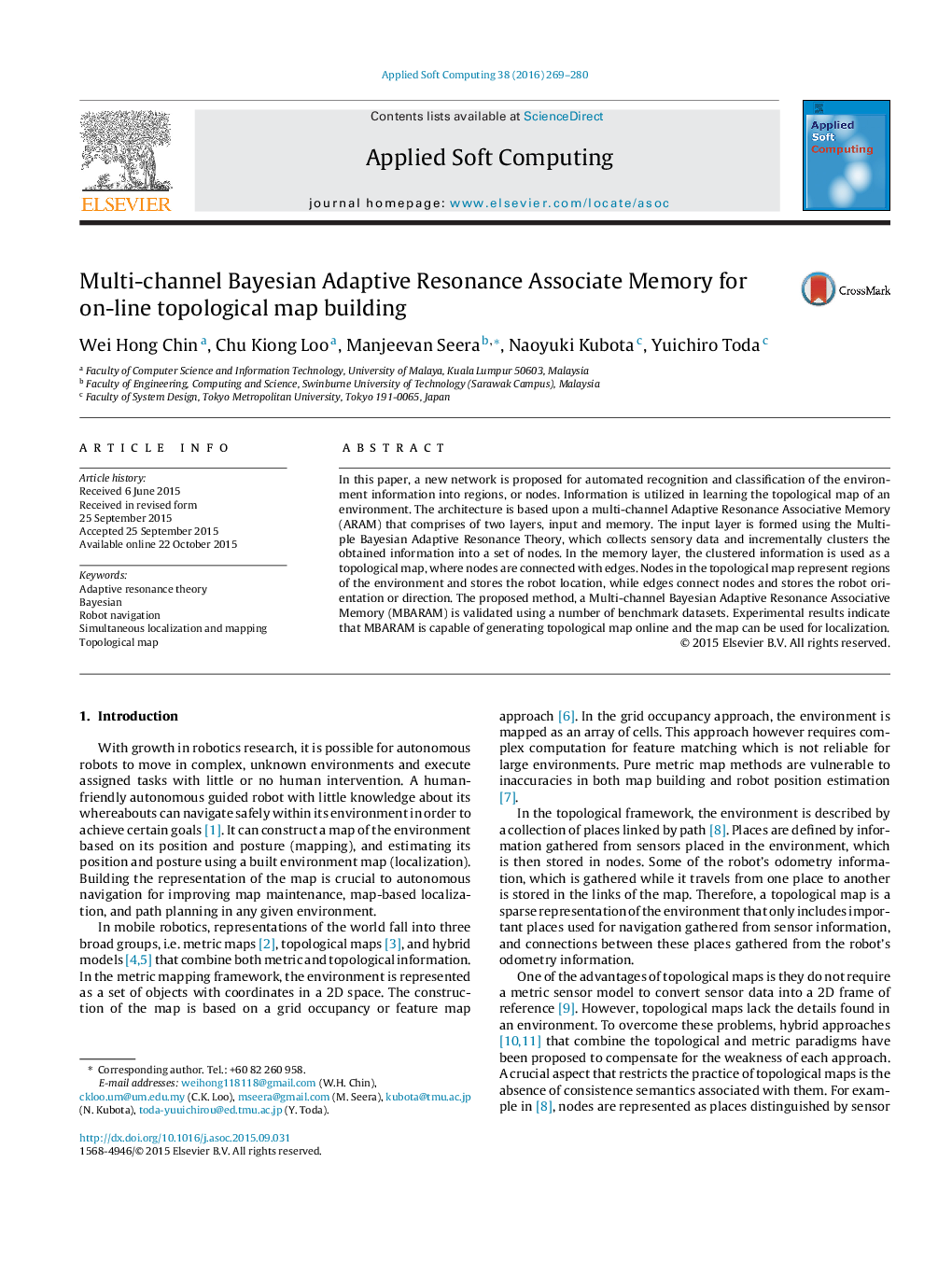| Article ID | Journal | Published Year | Pages | File Type |
|---|---|---|---|---|
| 494863 | Applied Soft Computing | 2016 | 12 Pages |
•MBARAM enables topological map building with little or no human intervention.•Does not require high-level cognitive and prior knowledge to function in a natural environment.•Multiple sensory sources are processes simultaneously crucial for real-world robot navigation.•Results show capability of generating topological map online used for localization.
In this paper, a new network is proposed for automated recognition and classification of the environment information into regions, or nodes. Information is utilized in learning the topological map of an environment. The architecture is based upon a multi-channel Adaptive Resonance Associative Memory (ARAM) that comprises of two layers, input and memory. The input layer is formed using the Multiple Bayesian Adaptive Resonance Theory, which collects sensory data and incrementally clusters the obtained information into a set of nodes. In the memory layer, the clustered information is used as a topological map, where nodes are connected with edges. Nodes in the topological map represent regions of the environment and stores the robot location, while edges connect nodes and stores the robot orientation or direction. The proposed method, a Multi-channel Bayesian Adaptive Resonance Associative Memory (MBARAM) is validated using a number of benchmark datasets. Experimental results indicate that MBARAM is capable of generating topological map online and the map can be used for localization.
Graphical abstractFigure optionsDownload full-size imageDownload as PowerPoint slide
